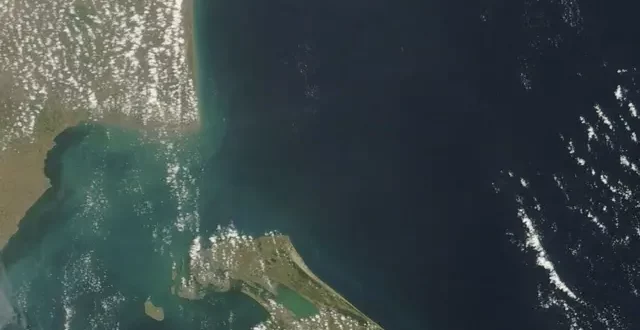Ram Setu: The European Space Agency has shared a picture (Picture ) taken by its Copernicus Sentinel-2 satellite, showing Ram Setu. Also known as Adams Bridge, it is a chain of natural limestone formations between India’s Rameswaram Island and Sri Lanka’s Mannar Island. The 48-km-long bridge was passable until the 15th century.
Gradually destroyed due to storms
There are several theories about how this bridge was built. However, geological evidence suggests that these limestone rocks are the remains of the land that once connected India and Sri Lanka. According to records, this natural bridge could be crossed until the 15th century, after which it was gradually destroyed due to storms in the following years.
Mannar Island is spread over 130 sq km
Some of the sand dunes are dry and as the light colour of the water suggests the sea here is very shallow, only 1-10 metres deep. Mannar Island is spread over about 130 sq km and is connected to mainland Sri Lanka by a road bridge and a railway bridge. Both the road bridge and a railway bridge are visible at the southern end.
On the opposite side of Ram Setu is Rameswaram Island, also known as Pamban Island. It can be reached from the Indian mainland over the 2 km long Pamban Bridge. There are two main towns on the island, Pamban on the western shore, and Rameswaram about 10 km east of Pamban.
Both sections of Ram Setu are part of protected national parks in their respective countries. The sand dunes serve as breeding grounds for birds such as the brown noddy, while many species of fish and seagrass thrive in the shallow waters. Marine fauna around Ram Setu include dolphins, dugongs and turtles.
 Indian Thought Latest News & Views
Indian Thought Latest News & Views



